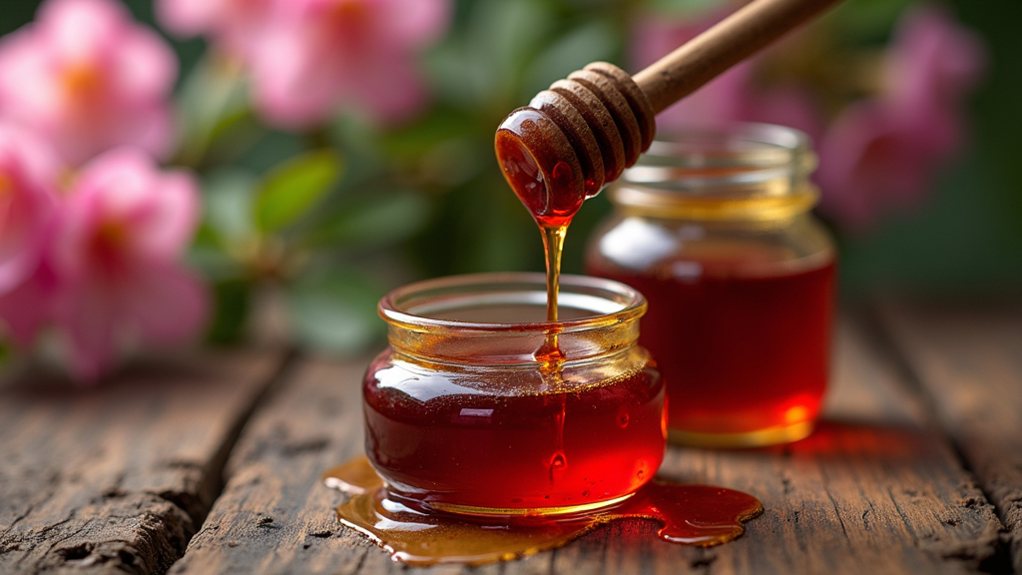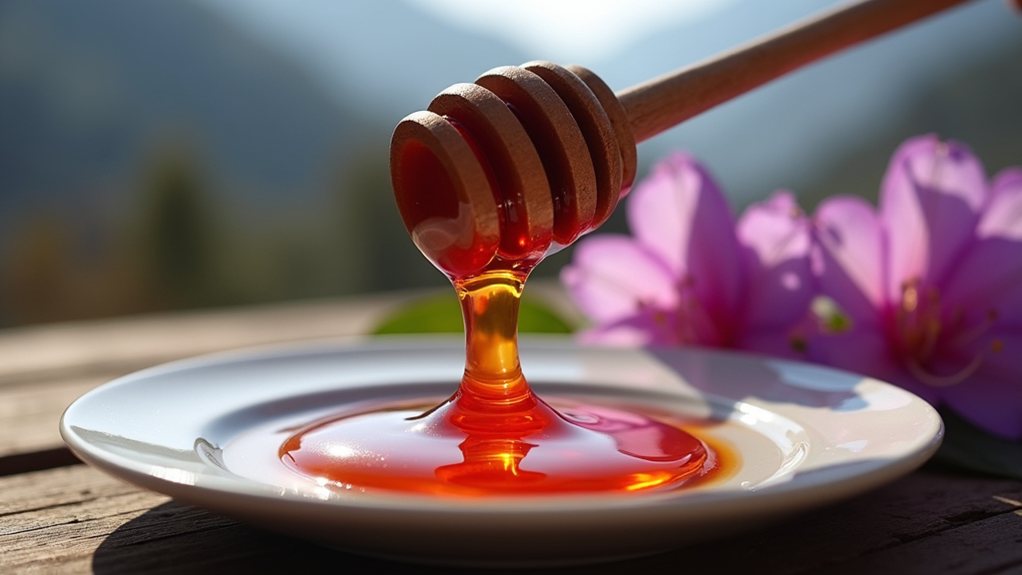In the remote hillsides of Nepal and Turkey grows a peculiar danger—rhododendrons that produce “mad honey,” a substance with mind-altering properties. This golden liquid contains grayanotoxins, compounds that interfere with normal brain function by disrupting sodium channels in neurons. At small doses, consumers report euphoria and heightened awareness; at larger amounts, vivid hallucinations take over. The ancient practice of harvesting this potent honey continues today, despite its risks, revealing nature’s surprising capacity to transform our perception of reality.
The Dangerous Neuroscience of Mind-Altering Honey

While most people consider honey a sweet, nutritious treat, there exists a rare variety known as “mad honey” that can cause mind-altering effects and potentially dangerous symptoms when consumed. This unusual substance originates primarily in the mountainous regions of Turkey and Nepal, where it’s produced by Himalayan giant honey bees (Apis laboriosa) that collect nectar from specific Rhododendron species. The resulting honey has a distinctive dark, reddish appearance and slightly bitter taste that sets it apart from conventional varieties.
Nature’s paradoxical nectar: sweet to taste, yet harboring mind-altering compounds that dance dangerously with human physiology.
What makes mad honey truly unique is its chemical composition, particularly the presence of grayanotoxins – natural neurotoxins that Rhododendron plants produce as a defense mechanism against herbivores. These compounds disrupt sodium ion channels in the brain, fundamentally tricking the nervous system into an altered state of functioning. Curiously, the bees themselves remain unaffected by these toxins due to specialized immunity mechanisms not found in humans.
The physiological effects of consuming mad honey can range from mild to severe, depending on dosage and individual sensitivity. At lower doses, users might experience euphoria, lightheadedness, and altered perception – effects that have led to its recreational use throughout history. However, larger amounts can trigger hallucinations, blurred vision, dangerous drops in blood pressure, reduced heart rate, and even seizures in extreme cases. Harvesting this unique honey involves considerable dangers due to cliff-side hives being located in extremely rugged terrain.
Despite these risks, mad honey has been valued for centuries in traditional medicine systems. Ancient texts, including Xenophon’s “Anabasis,” document its use, while communities in Nepal and Turkey have employed it to treat ailments ranging from gastrointestinal issues to inflammatory conditions. Some even prize it for supposed aphrodisiac properties. Mad honey was even used strategically as a biological weapon during the Third Mithridatic War in 65 BCE, when Roman soldiers were deliberately exposed to its effects.
Modern medical literature contains numerous reports of hospitalizations related to mad honey consumption, with adult males representing the majority of cases. Environmental factors like altitude and seasonal conditions can greatly affect the honey’s potency, making each batch unpredictable.
This natural psychoactive substance offers a captivating glimpse into the complex relationship between plants, insects, and human neurochemistry – a sweet deception with potentially bitter consequences.








